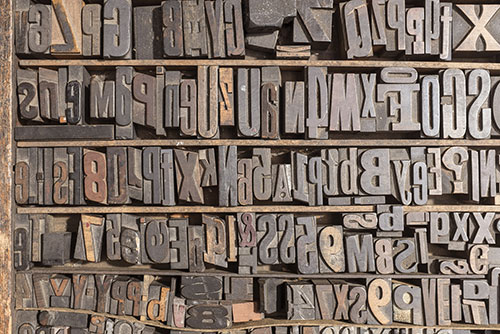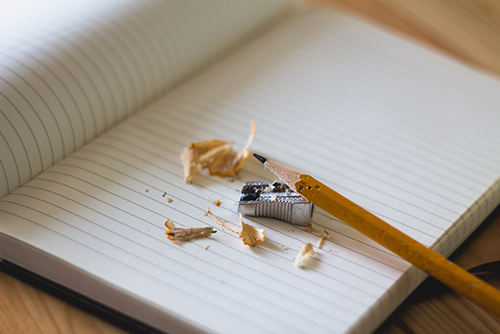Last Updated on March 23, 2022
 In an era when facts are being questioned, even by the President of the United States, we have to wonder: What becomes of nonfiction writing?
In an era when facts are being questioned, even by the President of the United States, we have to wonder: What becomes of nonfiction writing?
Since 2016, we have heard the term “fake news” repeated hundreds of times. Using the term “fake news” is intended to make people cast doubt on what they see before their own eyes. We live in a time when phrases such as “alternative facts” and “truth is not truth” have crept into our national conversation.
What does this language tell us? No one is above being questioned about the accuracy of their work, and those who write nonfiction may be especially scrutinized.
What this means for you, the nonfiction author, is that the truth matters.
When you are a nonfiction author or considering writing your first nonfiction book, know that readers are putting their trust in you and believing that what you write is true.
How can you be sure to tell your story in a way that adheres to the facts, is well researched, and gives your reader confidence that what you are writing is real?
To ensure accuracy, here are a few ways to reinforce or fortify your work:
Research. Before you even get to the writing stage of the first draft of your nonfiction book, you will likely need to do diligent research that, depending on the complexity of your project, might take months or even years to complete. It's in this rich research and fact-finding phase of the book-creation process that you'll start to solidify your ideas, find information you're looking for (and sometimes information you didn't know you were looking for), discover things you thought were true are not, and become, over time, an expert on your topic.
Multiple sources. If you want to verify something, it's important to look for more than one source of the information. Strive for multiple sources that can corroborate your information. (Three sources on a single piece of information are helpful, if you can find them.)
Primary Sources. Documents, artifacts, images, interviews with subjects who have first-hand knowledge of your topic, or other materials that provide first-hand accounts of your topic are known as primary sources and are considered the strongest, most reliable sources of information. Examples include archives, journals, oral histories, records, newspapers from the time period you are examining, etc.
Secondary Sources: Secondary sources are works that analyze or interpret an historical event, era, or topic. Often, secondary sources use primary sources to make their case. Examples include history books, journal and magazine articles, etc.
Interviews. Consider tape recording your interviews and then transcribing them so that you have evidence of the quotes you are using. Sometimes seeing the actual conversation on paper helps you to better understand what an interviewee was getting at.
Notes. Take diligent notes and keep notebooks of your research. When you fill a notebook, keep it. It's something you'll want to return to and reference later. (There's often nothing like your own handwriting that can help you to remember something important.)
Glossary of Terms. If appropriate, create a glossary to define unknown terms. Helping the reader to understand specific words or terminology helps to validate the accuracy of your work.
Index. As you may write about important topics, dates, and references in your book, you'll want to include a robust index, where readers can refer to key ideas, people, and places that appear throughout the text.
Files. Keep all of your records and research. Even if that means mountains of paper in filing cabinets or boxes. You never know when you might need to go back and refer to something or double-check a specific item — or when someone might summon these.
Visuals. In general, video and tape recordings don't lie. Photographs and visual documentation are excellent, if they add to what you're reporting on or explaining overall. Other visual aids such as charts and infographics can help in clarifying complicated concepts.
Legal. Citing your sources keeps you legally safe. Per copyright laws, The Chicago Manual of Style, and the AP Stylebook, for professional publications, you cannot merely state something as fact that you don't have sources for.
These tips are just a few best practices on your road toward crafting your nonfiction book. It's the work you do along the way that will ensure that when your project is completed, you feel confident that you can back up what you've written. Most of these tips are how journalists, especially investigative journalists, back up their work for reporting. (Ask any New York Times journalist how many files they have in their attic.)
Why do all of this work? Careful, critical research makes you, the author, the expert. You will know more about your topic than most, will have deeply researched every aspect of your subject, and when your book is published, you'll be able to confidently answer almost any question that comes your way.
A great editor will help you achieve a well-researched, well-sourced book by asking you the hard questions even after you've done due diligence. She may point out parts that need more explanation or items you may have missed. Having peer reviewers read your work critically is another crucial step before publication.
In an evermore discerning world, where audiences are increasingly selective about what they read — due to time constraints, an overabundance of content, and a more skeptical eye toward the news that has arisen in some circles of the nation — you'll want to make sure that your book, essay, or article can stand out — and stand up — by being as truthful and as trustworthy as possible.
- The Benefits of Attending a Writers' Retreat - October 29, 2021
- How to Finish Writing Your Book - March 4, 2020
- How To Write Something True - November 1, 2018



